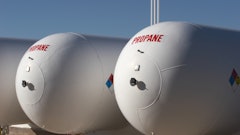
2022 greenhouse gas emissions shows a drop across most sectors that is the equivalent of removing more than 2.2 million gasoline-powered cars off California’s roads for one year, according to a report released by the California Air Resources Board (CARB).
“The numbers are clear: our world-leading regulations are reducing emissions, spurring innovation, and bringing us closer to achieving our climate goals,” says CARB chair Liane Randolph. “A future with clean air and a vibrant economy is possible and California is leading the way.”
“California has a plan to achieve its emission targets and the data show that the programs we put in place, which include increasing the use of clean fuels and making the switch to zero-emissions technology across sectors – are working,” says Dr. Steven Cliff, CARB’s executive officer. “California will continue to strengthen its programs to ensure that we are meeting our ambitious and urgent goals to achieve carbon neutrality and a clean air future.”
Key takeaways:
- The biggest drop came from transportation, due largely to the increased use of renewable fuels in addition to the growing strength of the zero-emission vehicle market. Five out of seven sectors tracked had drops that reduced total emissions by 9.3 million metric tons, or a 2.4% reduction from the year prior.
- The latest data underscores a continued trend of steady emissions decline even as the economy continues to grow. Between 2000-2022, emissions fell by 20% while California’s gross domestic product increased by 78%, pointing to the effectiveness of the state’s climate change and air quality programs.
- California has decreased the carbon intensity of its economy by 55% in the last 20 years.
- Emissions from on-road gasoline and diesel vehicles declined as a result of regulations such as Advanced Clean Cars and the Low Carbon Fuel Standard, which require cleaner emissions technology and cleaner fuel, respectively.
- The electricity sector had its lowest carbon intensity since 2000. Wind and solar now represent 30% of generation and in-state solar increased by 15% from 2021, driven by requirements under the state’s Cap-and-Trade Program and Renewables Portfolio Standard. Furthermore, California increased its battery storage by 757% from 2019 through 2023, bolstering its renewable energy efforts. The storage capacity is enough to power 6.6 million homes for up to four hours.
- Industrial emissions declined by 2%, also falling to the lowest level in 22 years. While refinery emissions remained essentially flat, emissions from oil and gas extraction declined, as did emissions from other fuel use, cement manufacturing, and cogeneration facilities.
- Livestock emissions, which are responsible for 70% of agriculture’s greenhouse gas emissions, peaked in 2012 and once again saw reductions in 2022. The decrease is driven by the use of methane digesters funded by the California Climate Investments and incentivized by the Low Carbon Fuel Standard, which capture emissions at the source and convert them to clean fuel.
- Landfill methane emissions also continued to decline in 2022. This decline can be attributed in part to the state’s efforts to reduce disposal of organic waste, as well as the California Landfill Methane Regulation, which requires landfill operators to monitor and capture emissions escaping from their facilities.
- Emissions from refrigerants also continue to decline in the transport sector. This reduction can be attributed to California’s transport refrigeration Airborne Toxic Control Measure and to the Low-Emission Vehicle Regulation (part of Advanced Clean Cars), which requires lower global warming potential refrigerants in automobiles.




















